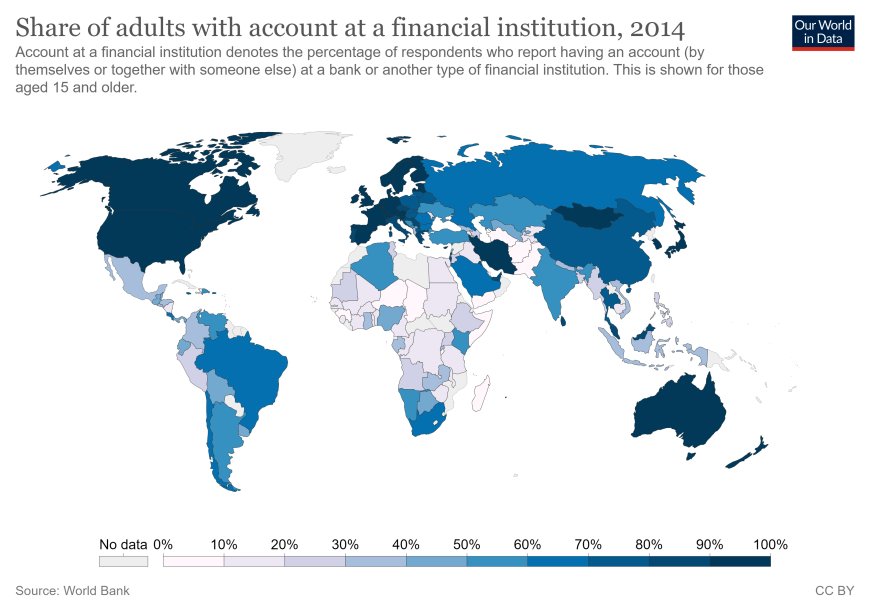Mastering Financial Goal Tracking: A Comprehensive
Mastering Financial Goal Tracking: A Comprehensive Guide Financial goal tracking is the cornerstone of successful money management.

Mastering Financial Goal Tracking: A Comprehensive Guide
Financial goal tracking is the cornerstone of successful money management. Whether you're striving to pay off debt, save for a down payment on a house, or build a comfortable retirement, setting and tracking your financial goals is crucial. In this comprehensive guide, we'll explore the ins and outs of financial goal tracking, from beginner-level strategies to advanced techniques that will help you reach your financial aspirations.
Understanding the Basics of Financial Goal Tracking
Financial goal tracking is the process of identifying your financial objectives, creating a plan to achieve them, and regularly monitoring your progress. This approach helps you stay focused, motivated, and accountable on your journey to financial success.
At the most fundamental level, financial goal tracking involves three key steps:
- Goal Setting: Clearly define your financial goals, whether they're short-term, medium-term, or long-term. This could include paying off a credit card, saving for a down payment, or building a retirement nest egg.
- Action Planning: Develop a detailed plan of action, including specific steps and timelines, to help you achieve your goals.
- Monitoring and Adjustment: Regularly review your progress, make necessary adjustments, and celebrate your successes along the way.
By following this straightforward process, you can transform your financial aspirations into tangible, achievable outcomes.
Beginner's Guide to Financial Goal Tracking
If you're new to financial goal tracking, don't worry – it's a skill that can be learned and mastered over time. Here's a step-by-step guide to get you started:
Step 1: Identify Your Financial Goals
The first step in effective financial goal tracking is to clearly define your goals. Start by asking yourself the following questions:
- What do I want to achieve financially in the short term (1-2 years), medium term (3-5 years), and long term (5+ years)?
- How much money do I need to reach these goals?
- What are the specific milestones or benchmarks I want to hit along the way?
Examples of common financial goals include:
- Paying off credit card debt
- Building an emergency fund with 3-6 months' worth of living expenses
- Saving for a down payment on a house
- Investing for retirement
- Funding a child's education
Once you've identified your goals, prioritize them based on their importance and timeline.
Step 2: Create a Financial Action Plan
With your goals in place, the next step is to develop a detailed action plan to help you achieve them. This plan should include the following elements:
- Budget: Create a comprehensive budget that tracks your income, expenses, and savings. Identify areas where you can cut back on spending to allocate more towards your financial goals.
- Milestones and Timelines: Break down your larger goals into smaller, more manageable milestones with specific deadlines. This will help you stay on track and celebrate your progress along the way.
- Strategies and Tactics: Determine the specific strategies and tactics you'll use to reach your goals, such as debt repayment methods, investment strategies, or savings techniques.
- Accountability: Enlist the support of a trusted friend, family member, or financial advisor to help keep you accountable and motivated.
Remember, your action plan should be realistic and tailored to your unique financial situation and lifestyle.
Step 3: Track and Monitor Your Progress
Regularly tracking and monitoring your progress is essential for achieving your financial goals. This step involves the following:
- Record-Keeping: Maintain detailed records of your income, expenses, and savings. This can be done manually using a spreadsheet or through the use of personal finance software or apps.
- Review and Adjustment: Review your progress against your action plan on a regular basis, such as weekly or monthly. If you're not on track, make the necessary adjustments to your budget, strategies, or timeline.
- Celebrate Milestones: Acknowledge and celebrate your progress as you hit your milestones. This will help keep you motivated and engaged in the process.
Consistent monitoring and adjustment will ensure that you stay on course and ultimately reach your financial goals.
Intermediate Strategies for Financial Goal Tracking
Once you've mastered the basics of financial goal tracking, you can explore more advanced strategies to take your money management to the next level. Here are some intermediate-level techniques to consider:
Leverage Technology and Tools
In the digital age, there's a wealth of technology and tools available to help you streamline your financial goal tracking process. Some useful options include:
- Personal Finance Apps: Apps like Mint, YNAB (You Need a Budget), and Personal Capital can automatically sync your bank and credit card accounts, categorize your transactions, and provide detailed insights into your spending and savings.
- Budgeting Spreadsheets: Excel or Google Sheets templates can be customized to fit your specific financial goals and tracking needs.
- Goal Tracking Software: Dedicated goal tracking apps, such as Strides or GoalMind, allow you to set, monitor, and manage your financial goals in a more structured and organized way.
Leveraging these tools can help you streamline your financial record-keeping, automate certain tasks, and gain a more comprehensive understanding of your financial situation.
Diversify Your Savings and Investments
As you progress in your financial goal tracking journey, it's important to consider diversifying your savings and investment strategies. This can help you mitigate risk and maximize your returns. Some strategies to explore include:
- Emergency Fund: Aim to build an emergency fund that can cover 3-6 months' worth of living expenses. This will provide a financial cushion in case of unexpected events or job loss.
- Retirement Accounts: Contribute to tax-advantaged retirement accounts, such as a 401(k) or IRA, to take advantage of compound growth and potential employer matching.
- Diversified Investment Portfolio: Allocate your investments across a mix of asset classes, including stocks, bonds, and real estate, to reduce overall risk and volatility.
By diversifying your savings and investments, you can create a more resilient financial foundation and increase your chances of achieving your long-term goals.
Seek Professional Guidance
As your financial situation becomes more complex, it may be beneficial to seek the guidance of a qualified financial advisor. A professional can provide valuable insights, personalized recommendations, and ongoing support to help you navigate the ever-changing financial landscape. Some key benefits of working with a financial advisor include:
- Comprehensive Financial Planning: A financial advisor can help you develop a holistic financial plan that aligns with your goals, risk tolerance, and time horizon.
- Tax Optimization: They can provide strategies to minimize your tax burden and maximize your savings and investments.
- Investment Management: Financial advisors can help you build and manage a diversified investment portfolio tailored to your specific needs.
- Accountability and Guidance: A financial advisor can hold you accountable to your financial goals and provide ongoing support and advice as your life and financial situation evolve.
While working with a financial advisor may come with a cost, the potential benefits can far outweigh the investment, especially as your financial goals become more complex.
Advanced Strategies for Financial Goal Tracking
For those who have mastered the basics and intermediate strategies of financial goal tracking, there are several advanced techniques to consider. These strategies can help you take your money management to the next level and achieve your most ambitious financial aspirations.
Automate Your Savings and Investments
One of the most effective ways to ensure consistent progress towards your financial goals is to automate your savings and investments. This involves setting up automatic transfers from your checking account to your savings, retirement, and investment accounts. By making these transfers a seamless, recurring process, you can ensure that your money is being allocated towards your goals without relying on manual action.
To implement this strategy, consider the following steps:
- Determine the appropriate percentage or fixed amount to transfer from your checking account to your various savings and investment accounts.
- Set up automatic transfers to occur on a regular basis, such as the day after your paycheck is deposited.
- Review and adjust your automated transfers as your financial situation and goals evolve over time.
Automating your savings and investments can help you build wealth more efficiently and with less effort, as the process becomes a seamless part of your financial routine.
Leverage Behavioral Finance Techniques
Behavioral finance is the study of how psychological factors influence financial decision-making. By understanding and applying principles of behavioral finance, you can create more effective financial goal tracking strategies that account for the cognitive biases and emotional tendencies that often impact our money management habits.
Some key behavioral finance techniques to consider include:
- Commitment Devices: These are tools or strategies that help you commit to your financial goals, such as setting up automatic transfers or enlisting the support of an accountability partner.
- Framing and Mental Accounting: Reframing your financial decisions in a way that aligns with your goals, and mentally allocating your money to specific purposes, can help you make more mindful choices.
- Gamification: Turning your financial goal tracking into a game-like experience, with rewards and challenges, can increase your engagement and motivation.
By incorporating behavioral finance principles into your financial goal tracking, you can create a more robust and sustainable plan that accounts for the psychological factors that often influence our money management habits.
Optimize Your Cash Flow Management
Effective cash flow management is crucial for achieving your financial goals. By closely monitoring and optimizing your cash flow, you can ensure that your money is being allocated in the most efficient and strategic way possible.
Some advanced cash flow management techniques include:
- Forecasting and Budgeting: Develop detailed cash flow forecasts and budgets that account for both expected and unexpected income and expenses. This will help you identify potential cash flow gaps and opportunities for optimization.
- Debt Management: Prioritize and strategically pay down high-interest debt, such as credit cards, to free up cash flow for other financial goals.
- Invoice and Receivables Management: If you're a business owner or freelancer, implement efficient invoicing and receivables management practices to ensure timely payments and maintain a healthy cash flow.
- Cash Flow Optimization Tools: Utilize specialized software or apps that can analyze your cash flow data, provide insights, and suggest optimization strategies.
By mastering cash flow management, you can ensure that your money is working as hard as possible to help you achieve your financial objectives.
Integrate Financial Goal Tracking with Estate Planning
As you progress in your financial goal tracking journey, it's important to consider the long-term implications of your wealth and how it will be passed on to your loved ones. Integrating financial goal tracking with estate planning can help you ensure that your assets and legacy are protected and distributed according to your wishes.
Some key estate planning considerations include:
- Wills and Trusts: Ensure that you have a comprehensive will and/or trust in place to dictate the distribution of your assets upon your passing.
- Beneficiary Designations: Review and update the beneficiary designations on your retirement accounts, life insurance policies, and other financial accounts to align with your estate planning goals.
- Power of Attorney and Advance Directives: Appoint trusted individuals to make financial and healthcare decisions on your behalf in the event of incapacity or incapacitation.
- Tax Planning: Work with a financial advisor and estate planning attorney to implement strategies that can help minimize the tax burden on your estate and maximize the inheritance for your beneficiaries.
By integrating your financial goal tracking with comprehensive estate planning, you can ensure that your wealth and legacy are preserved and passed on in accordance with your wishes.
Conclusion
Financial goal tracking is a fundamental skill that can help you achieve your most ambitious financial aspirations. Whether you're just starting your journey or looking to refine your strategies, this comprehensive guide has provided you with the tools and techniques to master financial goal tracking at every level.
Remember, the key to success lies in setting clear goals, creating a detailed action plan, and consistently monitoring and adjusting your progress. By leveraging technology, diversifying your savings and investments, and incorporating advanced strategies, you can take your financial goal tracking to new heights and secure a brighter financial future.
So, start today, stay committed, and watch as your financial dreams become a reality. Happy tracking!
KEYWORDS: financial goal tracking, goal setting, budgeting, savings, investments, financial planning, personal finance, money management
What's Your Reaction?
 Like
0
Like
0
 Dislike
0
Dislike
0
 Love
0
Love
0
 Funny
0
Funny
0
 Angry
0
Angry
0
 Sad
0
Sad
0
 Wow
0
Wow
0































































